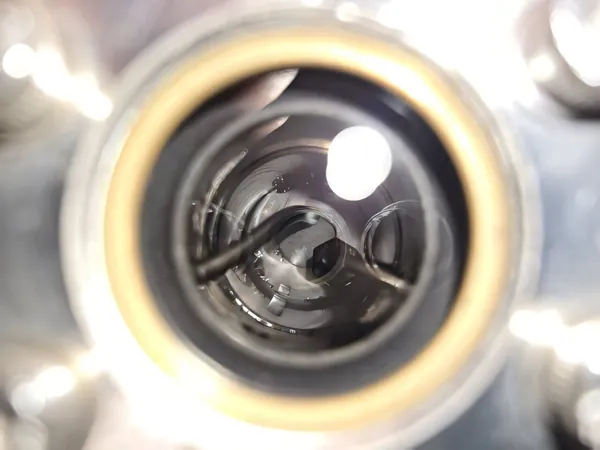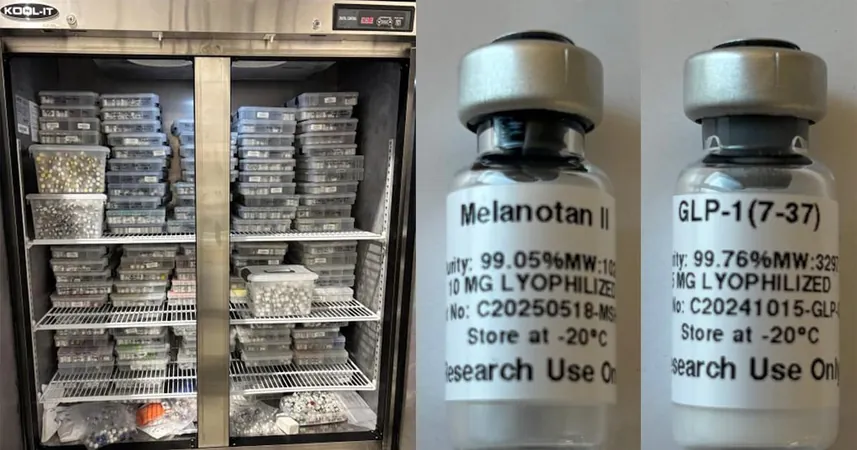
Moon Utopia: Scientists Reveal How Lunar Soil Could Sustain Life!
2025-07-16
Author: William
Lunar Soil: The Key to Life on the Moon?
In a groundbreaking study published in *Joule*, scientists have unveiled an innovative technology that could pave the way for human survival on the Moon. Researchers have successfully extracted water from lunar soil, demonstrating the potential to convert carbon dioxide into essential oxygen and fuel. This revelation could revolutionize future deep space exploration by dramatically reducing our reliance on bringing water and fuel from Earth.
Lu Wang from the Chinese University of Hong Kong, Shenzhen, exclaimed, "We never fully imagined the 'magic' that the lunar soil possessed!" The team's one-step method of extracting water and catalyzing CO2 not only boosts energy efficiency but could significantly lower the costs and complexities associated with establishing a lunar base.
A Spacecraft's Lifeline: The Cost of Water!
Space agencies have long considered the Moon as a potential outpost for interstellar adventures, but a major hurdle remains: securing enough resources, especially water. It currently costs approximately $83,000 to transport just one gallon of water by rocket, and each astronaut can consume about four gallons a day. The stakes are high, and sustainability on the Moon is essential.
Unlocking the Secrets of Lunar Water!
Samples from China's Chang'E-5 mission reveal the presence of water in lunar soil, and this study suggests that future explorers could utilize these natural resources instead of relying on costly shipments from Earth. Traditional methods for extracting water from lunar soil have been energy-intensive and lacked the ability to transform CO2 into vital fuel.
Innovative Technology to the Rescue!
To overcome these challenges, Wang and his team developed a groundbreaking approach that not only extracts water but also converts astronauts' CO2 exhalation into carbon monoxide and hydrogen gas for fuel and breathable oxygen. This technology harnesses a novel photothermal process—using sunlight to generate heat—revolutionizing lunar resource management.
Testing the Technology: A Step Forward!
The team tested their approach with lunar soil samples from the Chang'E mission and simulated lunar materials. They employed ilmenite, a black mineral known to store water, to conduct detailed analysis of the process's photothermal activity.
Challenges Ahead: Surviving the Lunar Environment!
While the laboratory results are promising, the extreme conditions on the Moon pose significant challenges. With drastic temperature fluctuations, intense radiation, and low gravity, employing this technology in the lunar environment won’t be straightforward. Additionally, the natural variability of lunar soil means that resource extraction could face inconsistencies.
Moreover, relying solely on CO2 from astronauts’ exhalations may not provide sufficient resources for water, fuel, and oxygen needs. Current technological limitations still hinder the potential for fully supporting human life outside of Earth.
The Future Awaits: Will We Live on the Moon?
The promise of lunar soil as a resource could change the trajectory of human space exploration forever. With continued innovation and research, the dream of establishing a sustainable human presence on the Moon might one day become a reality!









 Brasil (PT)
Brasil (PT)
 Canada (EN)
Canada (EN)
 Chile (ES)
Chile (ES)
 Česko (CS)
Česko (CS)
 대한민국 (KO)
대한민국 (KO)
 España (ES)
España (ES)
 France (FR)
France (FR)
 Hong Kong (EN)
Hong Kong (EN)
 Italia (IT)
Italia (IT)
 日本 (JA)
日本 (JA)
 Magyarország (HU)
Magyarország (HU)
 Norge (NO)
Norge (NO)
 Polska (PL)
Polska (PL)
 Schweiz (DE)
Schweiz (DE)
 Singapore (EN)
Singapore (EN)
 Sverige (SV)
Sverige (SV)
 Suomi (FI)
Suomi (FI)
 Türkiye (TR)
Türkiye (TR)
 الإمارات العربية المتحدة (AR)
الإمارات العربية المتحدة (AR)